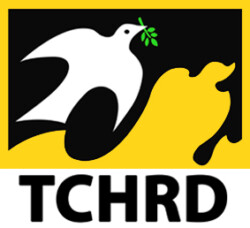17 May 2025 marks the 30th anniversary of the enforced disappearance of the 11th Panchen Lama of Tibet, Jetsun Tenzin Gedhun Yeshi Trinley Phuntsok Pal Sangpo.
On 17 May 1995, three days after His Holiness the 14th Dalai Lama officially recognized six-year-old Gedhun Choekyi Nyima as the reincarnation of the 10th Panchen Lama, Chinese authorities abducted the child and his family from their home in Lhari County, Nagchu (Ch: Nagqu) City, Tibet Autonomous Region. To this day, their fate and whereabouts remain unknown.
The enforced disappearance of Gedhun Choekyi Nyima constitutes a serious violation of international human rights law, including the Convention on the Rights of the Child, to which the People’s Republic of China is a State Party. Over the past three decades, the Chinese government has repeatedly denied independent access to the Panchen Lama, providing only unsubstantiated claims that “Gedhun Choekyi Nyima was “living a normal life” and “does not want to be disturbed by anyone.”
Following the death of the 10th Panchen Lama on 28 January 1989 in Shigatse, Chinese authorities swiftly moved to assert unilateral control over the search and recognition process for his successor. In a blatant violation of the Tibetan people’s right to freedom of religion and belief, the government issued internal directives to govern reincarnation procedures, undermining long-standing religious traditions.
Despite persistent appeals from Tibetan religious figures, including Chadrel Rinpoche, the abbot of Tashi Lhunpo Monastery, for the Dalai Lama’s involvement in accordance with established religious customs, Chinese officials systematically excluded him. Chadrel Rinpoche, who had been appointed by the government to chair the official search committee, engaged in clandestine communication with the Dalai Lama’s office in an effort to safeguard the religious integrity of the process.
After extensive consultations with senior Tibetan religious authorities and monastic communities, the search committee submitted a shortlist of candidates to the Dalai Lama. On 14 May 1995, the Dalai Lama officially recognized Gedhun Choekyi Nyima as the 11th Panchen lama.
On 18 May 1995, Chinese authorities arrested Chadrel Rinpoche and Champa Chung-la (Secretary of the search committee) at Hanzhong Airport in Chengdu. In the days that followed, a heavy security presence was deployed in Lhasa, Shigatse, and Nagchu, Meetings were convened at the Tashilhunpo Monastery, where officials from the United Front Work Department, Religious Affairs Bureau, and the Public Security Bureau pressured monks to denounce the Dalai Lama’s decision.
At Least 17 monks were arrested during the night-time raids on monastic quarters. Two years later, the Intermediate People’s Court of Shigatse Prefecture sentenced Chadrel Rinpoche to six years’ in prison on charges of ‘plotting to split the country’ and ‘leaking state secrets’ with an additional three-year deprivation of political rights. He was held incommunicado for years and reportedly died under suspicious circumstances in 2011, after enduring prolonged ill-treatment and medical neglect by the Chinese authorities.
The Chinese government later installed Gyaltsen Norbu as its chosen Panchen Lama through the Golden Urn method, a decision widely rejected by the Tibetan religious community both inside Tibet and in exile.
The case of Gedun Choekyi Nyima highlights the broader pattern of state interference in Tibetan religious affairs and the systematic dismantling of traditional spiritual institutions that have only intensified in recent years. The Chinese Government’s interest in recognition of reincarnated Lamas stems from its broader political objective of asserting control over Tibetan religious institutions. Officials view the successful appointment of a reincarnated lama as a means of securing influence over the corresponding monastery and by extension, the wider Tibetan community.
The continued secrecy surrounding the fate of the 11th Panchen Lama has drawn repeated concerns from numerous United Nations human rights experts, governments, and international organizations. Most recently, on 8 May, the European Parliament passed a resolution urging China to provide verifiable information about his condition and to respect the religious rights of Tibetans.
The enforced disappearance of Gedhun Choekyi Nyima remains one of the longest unresolved cases involving a child under international law. The Tibetan people’s right to practice their religion without fear, surveillance, or coercion must be upheld.
On the 30th year of enforced disappearance of Tibet’s Panchen Lama, TCHRD reiterates its calls to the Chinese government to immediately disclose the whereabouts and well-being of Gedhun Choekyi Nyima and his family; end all forms of state interference in the Tibetan Buddhist reincarnation system and religious affairs and allow independent international access to assess the human rights situation in Tibet.
